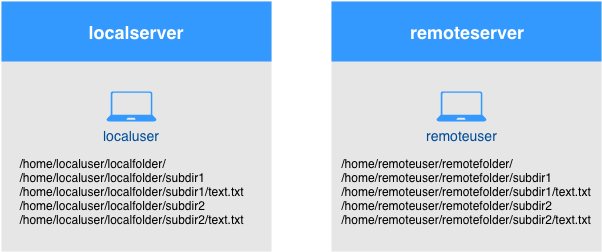
Both protocols use TCP as their transport protocol. Both SCP and the SSH File Transfer Protocol (SFTP) are considered more secure than legacy protocols like FTP. Following are some of the similarities and differences between the two systems. However, either option can be used in most cases. SCP and the SSH File Transfer Protocol (SFTP) are two alternative methods of more securely copying files between different systems. Before handling extremely sensitive data, consult with a security expert. No single protocol can be considered completely secure on its own. Because of its limited functionality, some experts recommend SFTP and rsync instead. SCP does not allow users to list, delete, or rename files. SSH profile messages can also cause errors or connection failures. For example, SCP does not interact properly with interactive shell profiles. But it is very basic in its functionality, and some security analysts have criticized it as inflexible and limited. It is considered a solid, reliable, and straightforward way to copy files. SCP is designed for speed and efficiency. This is more secure but is also less efficient. But in most recent releases, data is routed through the originating node as the default. This allowed data to pass between the two nodes without having to pass through the local host. Originally, SCP established a direct connection between the remote source and the remote destination. Because the files are encrypted, they cannot be accessed via a man-in-the-middle attack. In addition to encrypting the file contents, SCP also encrypts all passwords. SSH authenticates the user and encrypts the data for transfer. SCP uses the Secure Shell (SSH) protocol as a base layer. Sink mode: Sink mode accepts the file from the client and saves it to the specified directory. Source mode: Source mode accesses the requested source file from the file system and transmits it back to the client. The remote server then invokes the SCP process. By default, SCP connects using Transport Control Protocol (TCP) port 22. For example, Ubuntu includes a scp man page.īefore transferring the files, the client establishes an SCP connection to the remote server. Ssh copy files from one directory to another how to#
It is not defined in an RFC, but most Linux distributions have “man” pages describing how to use it. SCP replaced the original rcp command, which is no longer considered secure. SCP refers to both the protocol and the scp Linux utility. As an extra convenience, it can even copy files between two different remote systems. It also allows users to copy over entire directories of files. It allows users to copy files between their local server and a remote system, leaving the original in place. SCP is a way to transfer files with a reasonably high level of security. It also provides several scp examples, demonstrating several different scenarios. This guide describes how SCP works and explains how to use the scp command on Linux distributions. A popular choice for more quickly and securely copying files is the Secure Copy Protocol (SCP). There are many programs and utilities to accomplish this task, but not all of them are secure.

You should see test2.txt listed inside folder2.Copying files to a remote computer is a very common task. Use cd to change directory and ls to check the file copied correctly. Check that the file has been copied correctly by changing directory to folder2 and listing the contents. We can supply the cp command with the name and location of the target file to copy and where to copy the file, renaming it to test2.txt along the way.

Copy and rename the test file from the home directory. Move inside folder1 and make a test file called test1.txt. From the home directory run the following command to create two new directories. Here’s an example of how it could be done.ġ.

If you know the location of a file and the target location you want to copy the file to, you don’t need to move into the directories directly and you can run the cp command from the home directory.







 0 kommentar(er)
0 kommentar(er)
